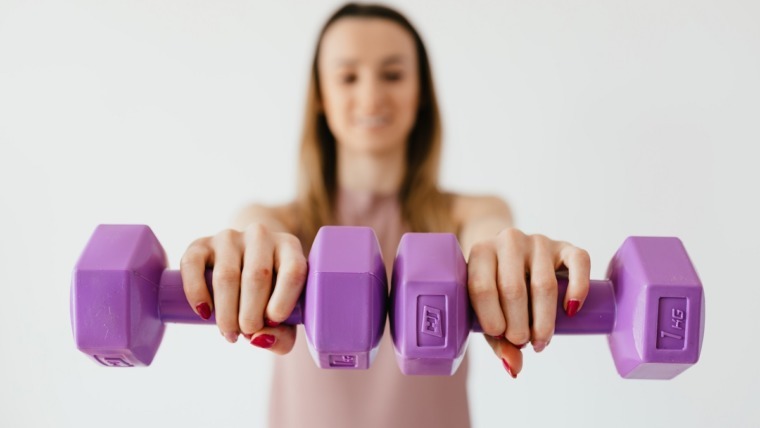
4 Steps To Take Charge
Written by Michael Dermansky
After a very stressful and uncertain 18 months, fitness and taking charge of your own health seems to be a major priority in a lot of people’s lives. So how are you going to do it? How are you going to make a good intention into real change and an improvement in your life?
1. Setting Your Fitness Goals:
The first step is to set realistic fitness goals. These do not have to be perfect, you don’t need to know how you are going to get there, you just have to set them, have a direction and start.
According to Jack Canfield, the best way to achieve your goals is to follow the pattern of ready, fire, then aim. The hardest step is usually to get started. When you begin on your journey to achieve your goals, the feedback will let you know what the next step should be, as long as you are prepared to fail forward, try something, see the result, change but keep going in your desired direction.
When you set a goal and visualise it, you create a conflict in your subconscious between where you are now and where you want to be. As a result, you activate a part of your brain called the reticular activating system (RAS), which starts to allow you to look for ways to find a solution. For example, say you wanted to buy a “red” car, suddenly you start noticing all the “red” cars on the road. This is facilitated by the RAS. There are no more red cars then there were before, you are just more attuned to noticing them.
Then naturally, when you make your goals, you will feel anxiety. This is normal. If you don’t feel this anxiety, your goal really isn’t big enough.
Your brain will think about all the reasons that it can’t do it, you will feel all the emotions that “stop” you doing the goal and there will be actual roadblocks, obstacles that the world puts in front of you that you need to overcome to achieve your goal. All of this is normal and part of your personal development is learning how to overcome these cognitive, emotional and physical barriers to achieving your goal.
For example, say you want to lose weight and you start your fitness journey by going for a run 3 times a week for 20 minutes. After 1 month, not only is there no result, but your knee is sore now too. This is not a bad thing, just the next step in your journey. You can visit your doctor and potentially find out that you have a low acting thyroid (hypothyroidism), which is common and needs to be managed with medication. You see your physiotherapist and find out that you are very weak around the hips, knees and ankles and that this has led to increased pressure on your knees. This means that you can strengthen these muscles to be able to run and then achieve your weight loss goals.
Just remember to lean into the goal, it creates momentum and opens you up to opportunities as long as you are willing to do what you need to take the next step and move further towards the goal each time.
2. Changing Your Habits
What is a habit? It starts off as a choice, which we continue to do until it becomes unconscious. These patterns move from the thinking part of the brain (Cerebrum) to the automatic part of the brain (Basal Ganglia), so that we can automatically do repetitive tasks and not have to think about them all the time.
How are habits triggered? The “Cue” triggers the habit and tells it to go into automatic routine mode. The result of this routine is a reward, which we then decide if it is worth packaging and storing this routine into our Basal Ganglia. However, as the Basal Ganglia is primitive, it can not decide whether the routine is good or bad, it just knows to execute it.
Changing a habit takes time and practice (Average 66 days). Start with 1 habit and identify a “Cue” that starts it (e.g. chocolate when you sit down in front of the TV). It is often hard to change the “Cue” and the “Reward”, but easiest to change the “Routine” afterwards. So, do things that deliberately trigger the reward you want (powerful enough you want to repeat) and work on changing the actions after the cue is triggered.
For example, having your exercise clothes ready when you wake up, can trigger the feeling of satisfaction that you have done your exercise program, so you change your routine AND/OR reward bundling (Do something you love with something you have to do.
Other aspects you can change to help reinforce the “good” habits include, making the activity you want to do more convenient AND making doing the activity you don’t want more inconvenient.
Remember, the reason it is a habit is that the action has because automatic so that often you are doing it before you even realise you are doing it. Be patient with yourself and be prepared for setbacks, they are normal and part of the learning journey.
3. Get A Professional To Help You Out
If you don’t know what you are doing and where to start, that’s what professionals are for. For example, a large portion of the clients that we see want to get fitter and strong, but don’t know where to start and have failed on their own without help.
This is our job to find a solution. A professional such as a physiotherapist, exercise physiologist or well-qualified personal trainer should assess your head to toe and determine a program that will best suit your needs.
It is their job to look at and see the things that you are not aware of that will limit your fitness journey and design a program to overcome these obstacles.
A very common scenario that we see is that at the beginning of spring, people want to start to get fitter for summer and go for a run, 3 times a week as an initial step. Although this sounds reasonable, the limiting factor is usually a lack of strength. Poor control around the hips, knees and pelvis can often lead to hip and back pain, stopping people early in their tracks. With the lockdowns in Melbourne, the only form of exercise (and social interaction) people have had in the last 6 months or so is to go walking, so we have seen a disproportionate number of hip injuries because they have just not been strong enough to do the volume of walking they have started to do and a hip injury has been the result.
Often it is better to start with a well-structured strengthening program for 6-12 weeks, to build a good base of strength before commencing a running program. Although it feels like you are going slower, it actually means that you will get to your goals faster, by doing the right steps at the right time with the long term in mind.
4. Setbacks, They Are Normal
No successful journey is ever a straight line. Re-enforcing again, when you start you open yourself up to the opportunities that the next step will bring.
Take the first step, you don’t need to know what the next step will be, it will be revealed after you take the first step. If it is the wrong direction, at least you will know and can change your path, however, if you don’t start you will never know.
It is very rare when we see clients that the steps that they take on their fitness journey are that catastrophic that they can’t change their direction and improve. Even if you hurt your back doing an exercise, it will settle and you can take corrective action to settle it down, build strength in the back muscles (in particular the multifidus muscles, the direct stabilisers of the lower back and the gluteal muscle groups, the power muscles around the lower back and pelvis) to prevent the injury in the future. And don’t be afraid to ask a professional, it is their job to keep you safe, healthy and on the right fitness path.



